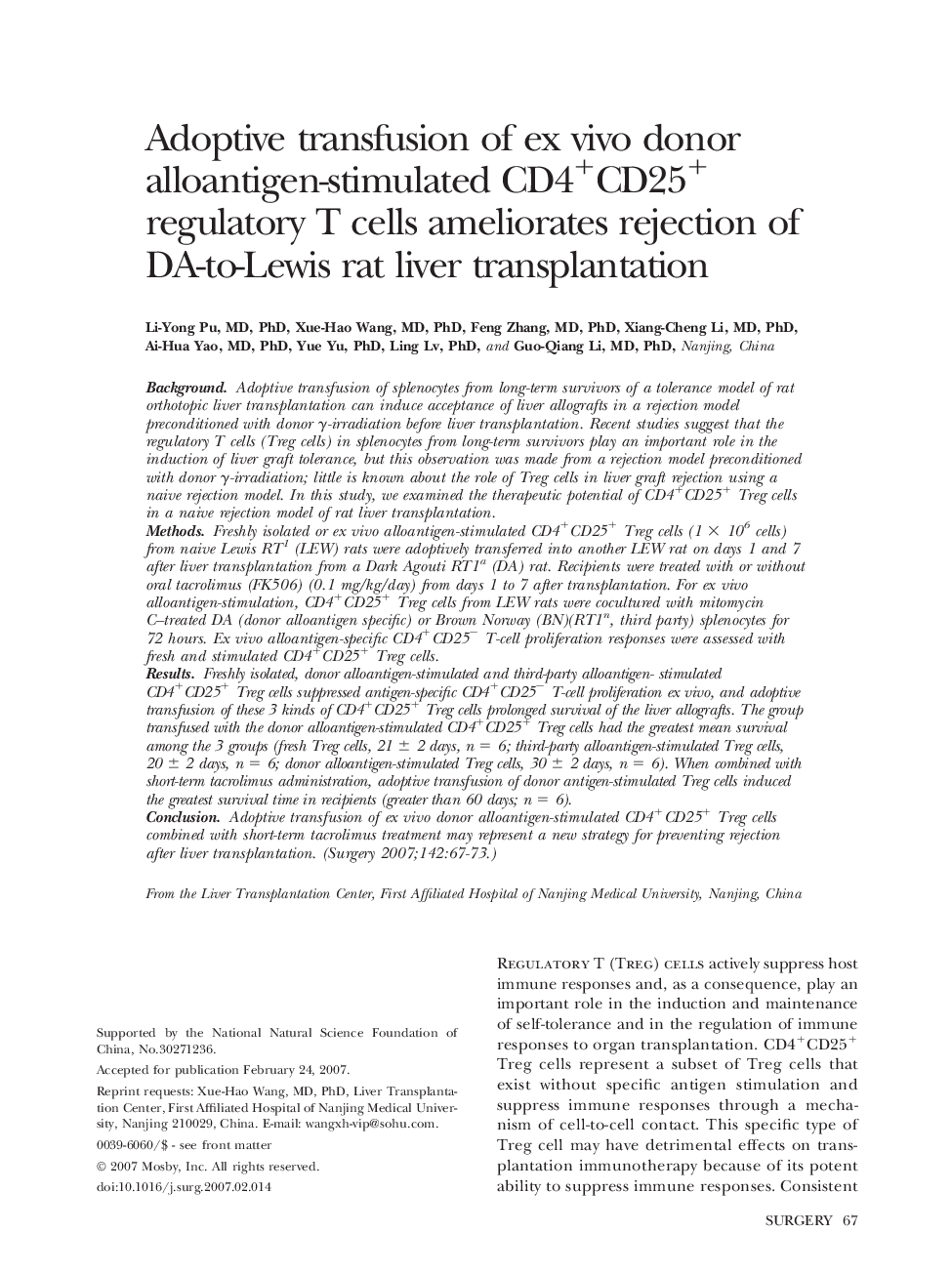| Article ID | Journal | Published Year | Pages | File Type |
|---|---|---|---|---|
| 4309944 | Surgery | 2007 | 7 Pages |
BackgroundAdoptive transfusion of splenocytes from long-term survivors of a tolerance model of rat orthotopic liver transplantation can induce acceptance of liver allografts in a rejection model preconditioned with donor γ-irradiation before liver transplantation. Recent studies suggest that the regulatory T cells (Treg cells) in splenocytes from long-term survivors play an important role in the induction of liver graft tolerance, but this observation was made from a rejection model preconditioned with donor γ-irradiation; little is known about the role of Treg cells in liver graft rejection using a naive rejection model. In this study, we examined the therapeutic potential of CD4+CD25+ Treg cells in a naive rejection model of rat liver transplantation.MethodsFreshly isolated or ex vivo alloantigen-stimulated CD4+CD25+ Treg cells (1 × 106 cells) from naive Lewis RT1 (LEW) rats were adoptively transferred into another LEW rat on days 1 and 7 after liver transplantation from a Dark Agouti RT1a (DA) rat. Recipients were treated with or without oral tacrolimus (FK506) (0.1 mg/kg/day) from days 1 to 7 after transplantation. For ex vivo alloantigen-stimulation, CD4+CD25+ Treg cells from LEW rats were cocultured with mitomycin C–treated DA (donor alloantigen specific) or Brown Norway (BN)(RT1n, third party) splenocytes for 72 hours. Ex vivo alloantigen-specific CD4+CD25− T-cell proliferation responses were assessed with fresh and stimulated CD4+CD25+ Treg cells.ResultsFreshly isolated, donor alloantigen-stimulated and third-party alloantigen- stimulated CD4+CD25+ Treg cells suppressed antigen-specific CD4+CD25− T-cell proliferation ex vivo, and adoptive transfusion of these 3 kinds of CD4+CD25+ Treg cells prolonged survival of the liver allografts. The group transfused with the donor alloantigen-stimulated CD4+CD25+ Treg cells had the greatest mean survival among the 3 groups (fresh Treg cells, 21 ± 2 days, n = 6; third-party alloantigen-stimulated Treg cells, 20 ± 2 days, n = 6; donor alloantigen-stimulated Treg cells, 30 ± 2 days, n = 6). When combined with short-term tacrolimus administration, adoptive transfusion of donor antigen-stimulated Treg cells induced the greatest survival time in recipients (greater than 60 days; n = 6).ConclusionAdoptive transfusion of ex vivo donor alloantigen-stimulated CD4+CD25+ Treg cells combined with short-term tacrolimus treatment may represent a new strategy for preventing rejection after liver transplantation.
